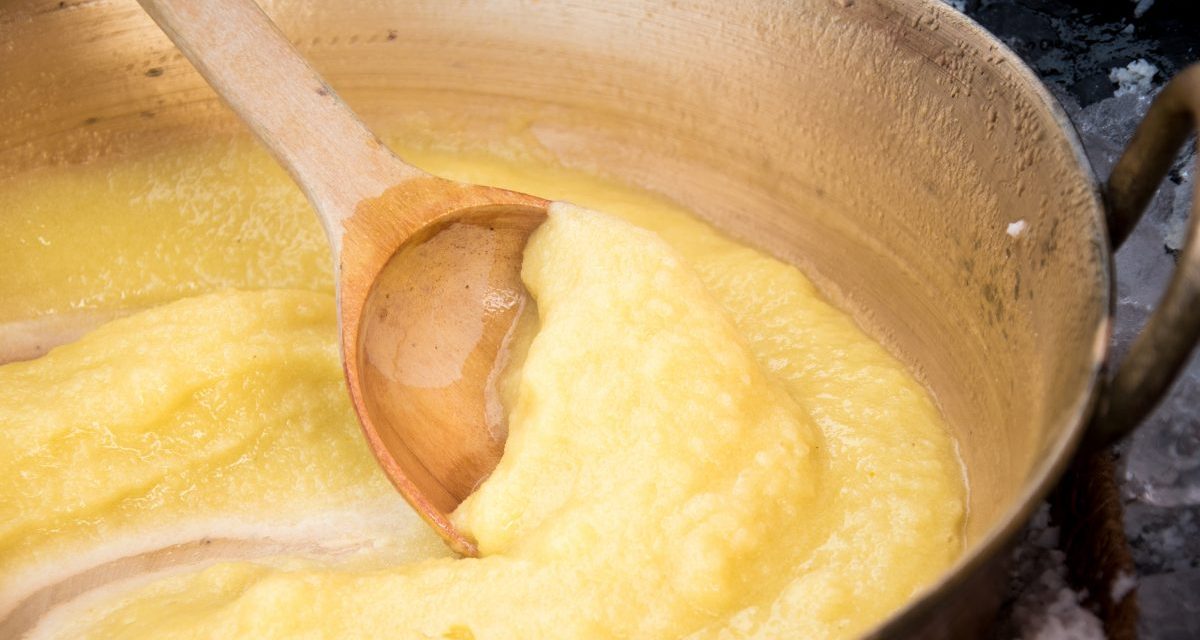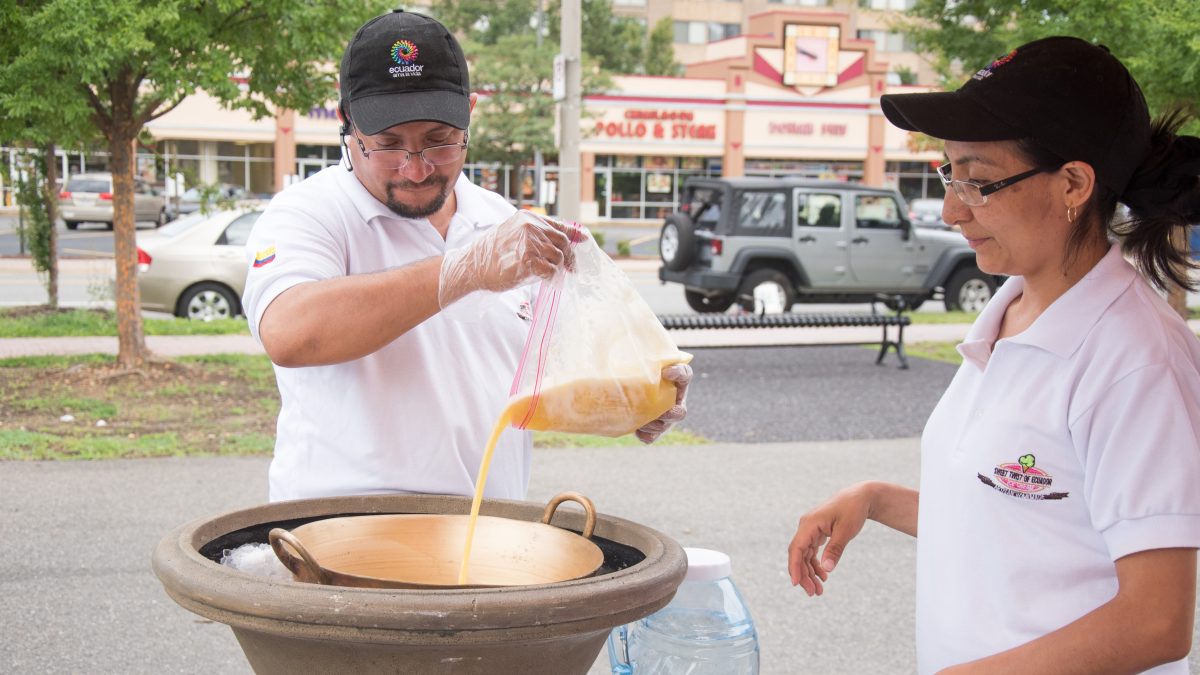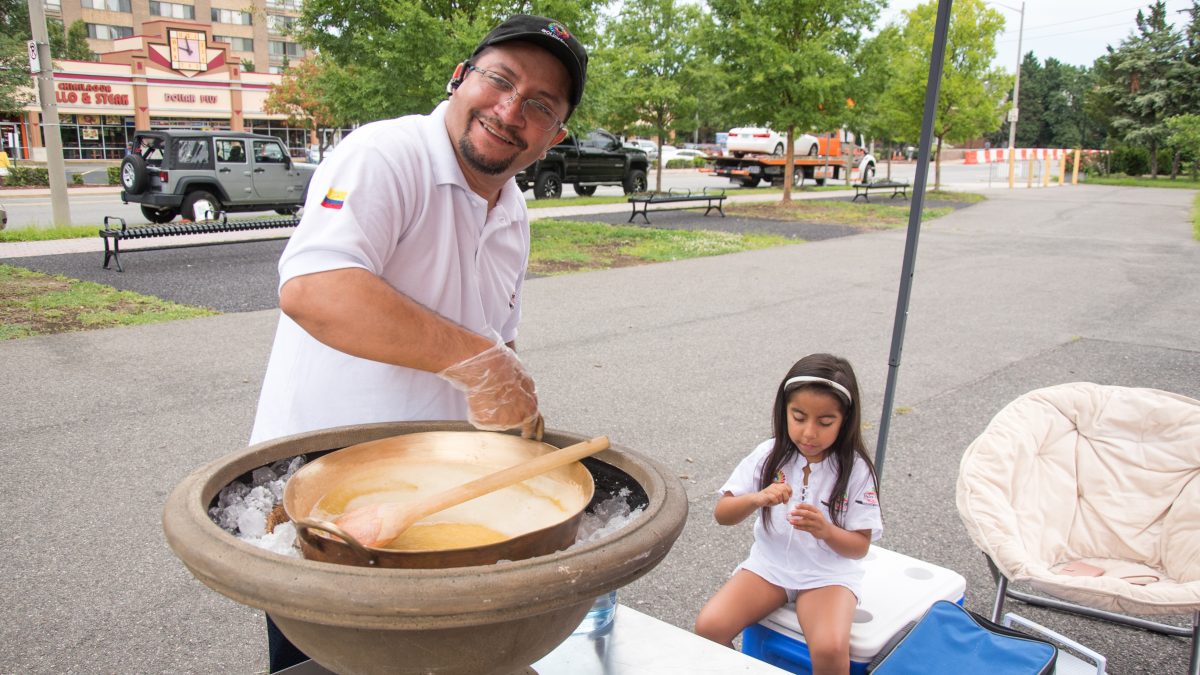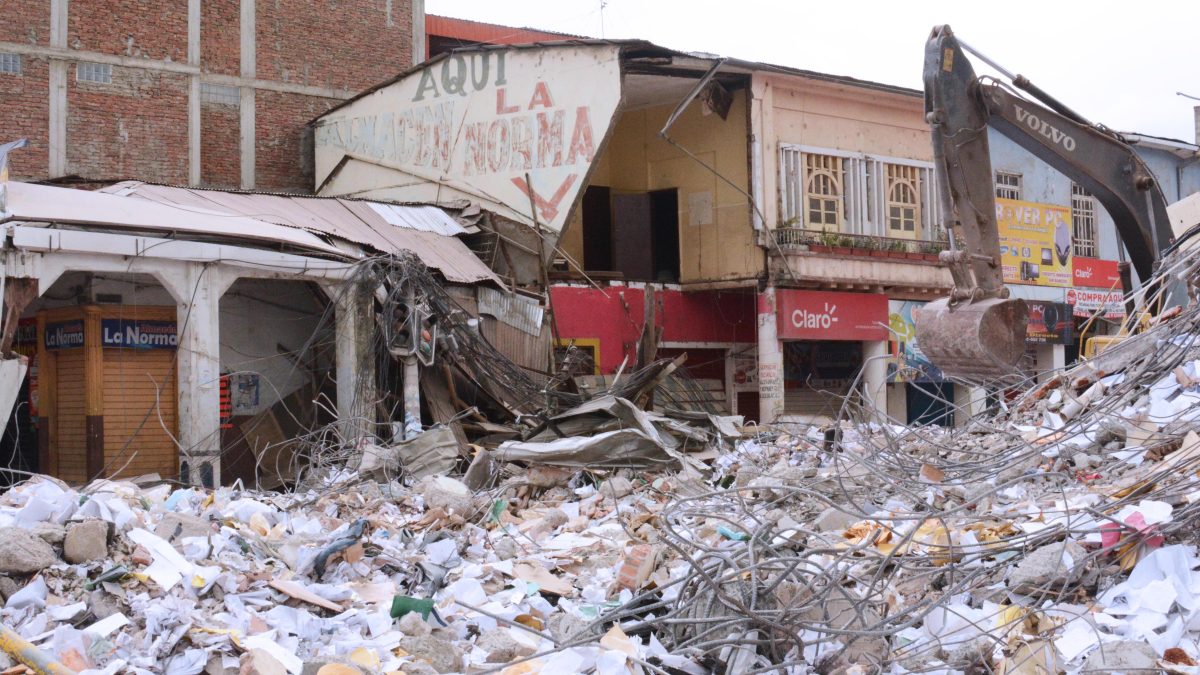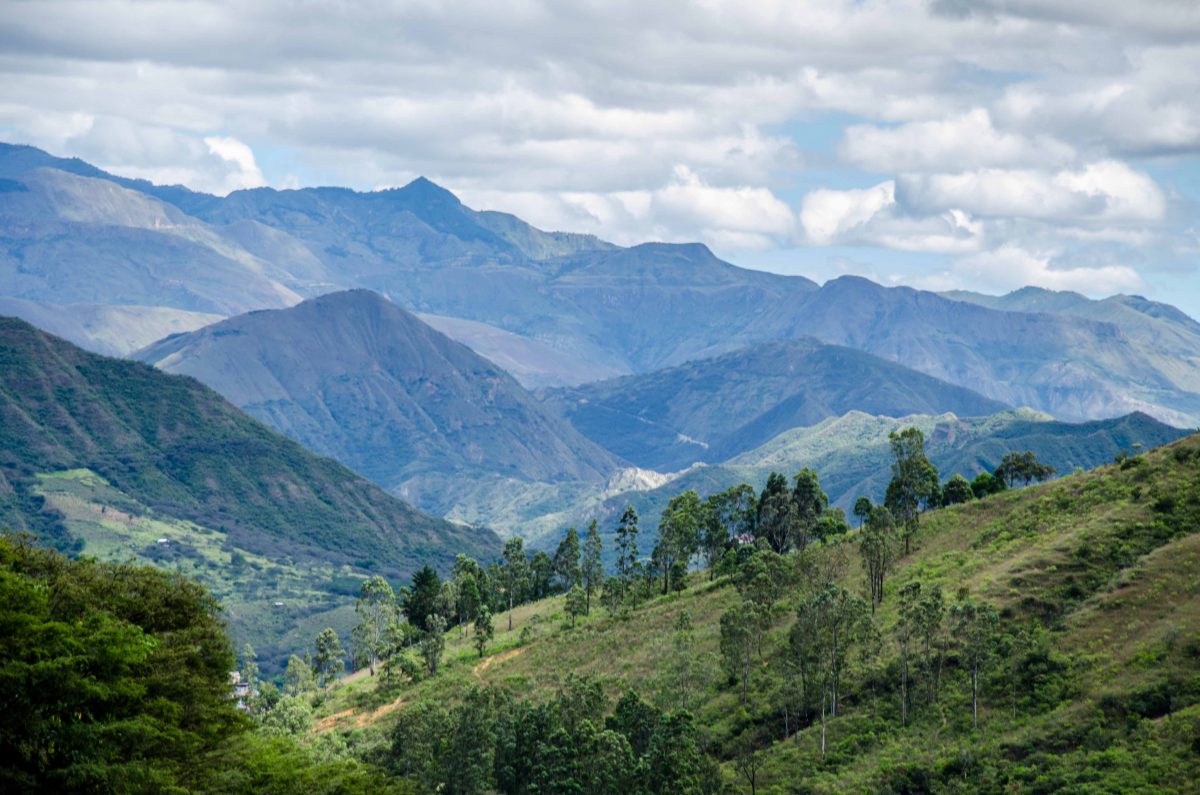As responsible travelers evolve, so do the stories we share.
This article is part of our living archive — trusted content we continue to care for.
First published on August 10, 2017 • Last updated on August 10, 2017.
The famous Helado de Paila of Ecuador is for sale in the DMV (that’s DC, Maryland, and Virginia for my non-beltway readers!).
Your first question is probably, “What is Helado de Paila?” Literally, it means “ice cream from a pot” but that translation is a poor description of the final product. Let’s get you the details.
The Helado
The recipe for every flavor of Helado de Paila, often passed down from mother to daughter, is unique to each family. The best recipes are pared down to the very basics – fruit, a little additional liquid like juice, water, or milk, and just enough sugar to sweeten the mixture. The result is a liquid base that will be frozen into ice cream.
Recipes using only fruit and juice are sorbet-like. Those that use a dairy-base are custard-like. Both are frozen in the same way.
The Paila
The paila is a traditional cooking pot usually artisan-made from bronze or copper. They come in sizes from tiny, only 8 or so inches across, to gigantic, a full meter wide to feed a festival crowd. The best pailas are handed down from family to family, their outsides often black with soot from wood-fire cooking hearths. The insides are shiny, scrubbed with salt and lemon juice to keep them in the best condition. A well-used paila is like a beloved cast-iron skillet; it imparts its own special flavor after years of costant use.
Pailas have been used in Ecuadorian cooking for generations. The fritada of the Ecuadorian Sierra is fried in a paila; the best corn for tostado is toasted in a paila; and the sweetest ice cream is frozen in a paila.
I bought my own paila at an antique store just outside of Otavalo in hopes of recreating some of the best Ecuadorian dishes in my own kitchen. Luckily, I may not have to use it to make ice cream. Mauricio Esteban Lafebre and Ana Garcia have 5 years of experience making Helado de Paila in the historic neighborhood, La Ronda in Quito, Ecuador. Today, they practice the art here in the DMV. The husband and wife team call themselves Sweet Twist of Ecuador and are just beginning to make inroads to markets in the region.
On a recent visit this last Sunday, Mauricio showed me how it was done.
The Method
Mauricio filled a container that looked like a large bird feeder with crushed ice and rock salt. He then placed an 18-inch wide paila on top of the ice. Mauricio spun the paila so that it moved freely, using friction to help transfer the cold of the ice/salt mixture through the highly conductive metal, making the brass cold to the touch.
He then poured in the liquid mixture – this one was the sweet and tangy fruit called naranjilla blended with a little water and sugar. Using a large wooden spoon, he stirred the mixture, scrapping the edges of the pot every few minutes. With each scrape, Mauricio churned the frozen ice cream into the center of the paila allowing the unfrozen mixture to contact the icy brass. A combination of spinning the pot in the salted ice and stirring the liquid inside the pot so that it would slowly freeze makes a smooth and creamy Helado de Paila, even without the addition of dairy.
Because traditional Ecuadorian flavors like naranjilla, taxo, and guanabana are so hard to find in the DMV, Mauricio and Ana are working with locally grown products to produce flavor combinations like watermelon, cantaloupe, and mint or peach, kale, and spinach. Business was brisk last Sunday. People were attracted to the artisanal method of Ecuadorian ice-cream making but stayed for a taste of the ice cream. Clients young and old gave it a big thumbs up.
Finding Sweet Twist of Ecuador
The best way to keep track of Sweet Twist of Ecuador is to follow them on their Facebook page. This summer, they are selling at the Four Mile Run Farmers and Artisans Market on Sundays and the Arlington Courthouse Farmers Market on Thursdays.

